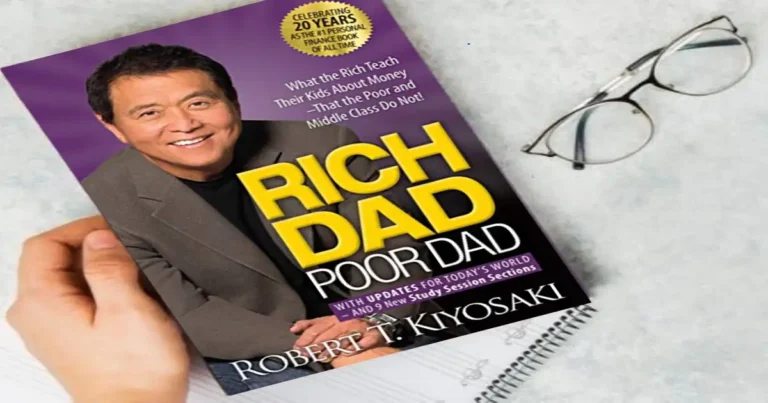Rich Dad Poor Dad Introduction
“Rich Dad Poor Dad” is a personal finance book written by Robert Kiyosaki that advocates for financial independence and wealth-building through investing, real estate, and entrepreneurship. The book purports to contrast the financial lessons Kiyosaki learned from his “rich dad,” his friend’s father who was a successful businessman, with the lessons he learned from his own father, who was a college-educated but financially struggling teacher.
The book has been a bestseller and has inspired a series of related books, seminars, and other products. Its ideas and advice have been influential, but they have also been the subject of criticism and controversy. Some reviewers have praised the book for its practical financial advice and its emphasis on entrepreneurship, while others have criticized it for oversimplifying complex financial concepts and for promoting unproven or risky investment strategies.
Here is a summary of the main ideas presented in the book:
- The importance of financial literacy: The book emphasizes the importance of understanding how money works and how to build wealth, rather than just earning a high income and saving money in a traditional way.
- The concept of “rich dad” and “poor dad”: The book uses the concept of “rich dad” and “poor dad” to illustrate the different approaches to money and wealth. The “poor dad” represents the traditional approach to money, which focuses on earning a high income, saving money, and avoiding debt. The “rich dad,” on the other hand, represents a more entrepreneurial approach to wealth, which focuses on building passive income streams and investing in assets.
- The importance of building passive income streams: The book advocates for building passive income streams, such as rental properties or businesses that generate income without requiring constant effort and attention. According to the book, passive income streams allow you to build wealth and financial freedom over time.
- The importance of investing in assets: The book encourages readers to invest in assets, such as stocks, real estate, and businesses, rather than just saving money in a traditional manner. According to the book, assets have the potential to generate passive income and increase in value over time, while saving money in a traditional way may not provide the same level of financial security and growth.
- The dangers of debt: The book also discusses the dangers of debt and the importance of avoiding it whenever possible. According to the book, debt can be a major burden and hinder financial success, and it’s important to focus on paying off debt and avoiding it whenever possible.
- Traditional education is inadequate for financial success: The book argues that traditional education systems do not adequately prepare people for financial success, as they focus on preparing students for careers rather than teaching them how to manage money and build wealth.
- Entrepreneurship and investing are key to building wealth: Instead of seeking a high-paying job, the book advocates for entrepreneurship and investing in assets (such as real estate) as the best way to build wealth
- Financial literacy is crucial: The book stresses the importance of understanding financial concepts and principles, such as the difference between assets and liabilities, in order to make sound financial decisions.
- The rich think differently about money: According to the book, successful people have a different mindset when it comes to money and wealth-building. They are willing to take risks and think long-term, while those who are less financially successful tend to play it safe and prioritize short-term security.
- Financial independence is the ultimate goal: The book encourages readers to strive for financial independence, meaning they have enough passive income from their investments to support their lifestyle without relying on a traditional job.
Conclusion
“Rich Dad Poor Dad” is a personal finance book that advocates for financial literacy and encourages readers to build wealth through passive income streams and investing in assets rather than just earning a high income and saving money in a traditional manner. The book uses the concept of “rich dad” and “poor dad” to illustrate the different approaches to money and wealth, with the “poor dad” representing the traditional approach and the “rich dad” representing a more entrepreneurial approach. The book also discusses the importance of building passive income streams, investing in assets, and avoiding debt.
